12 Great Days Out in Yorkshire

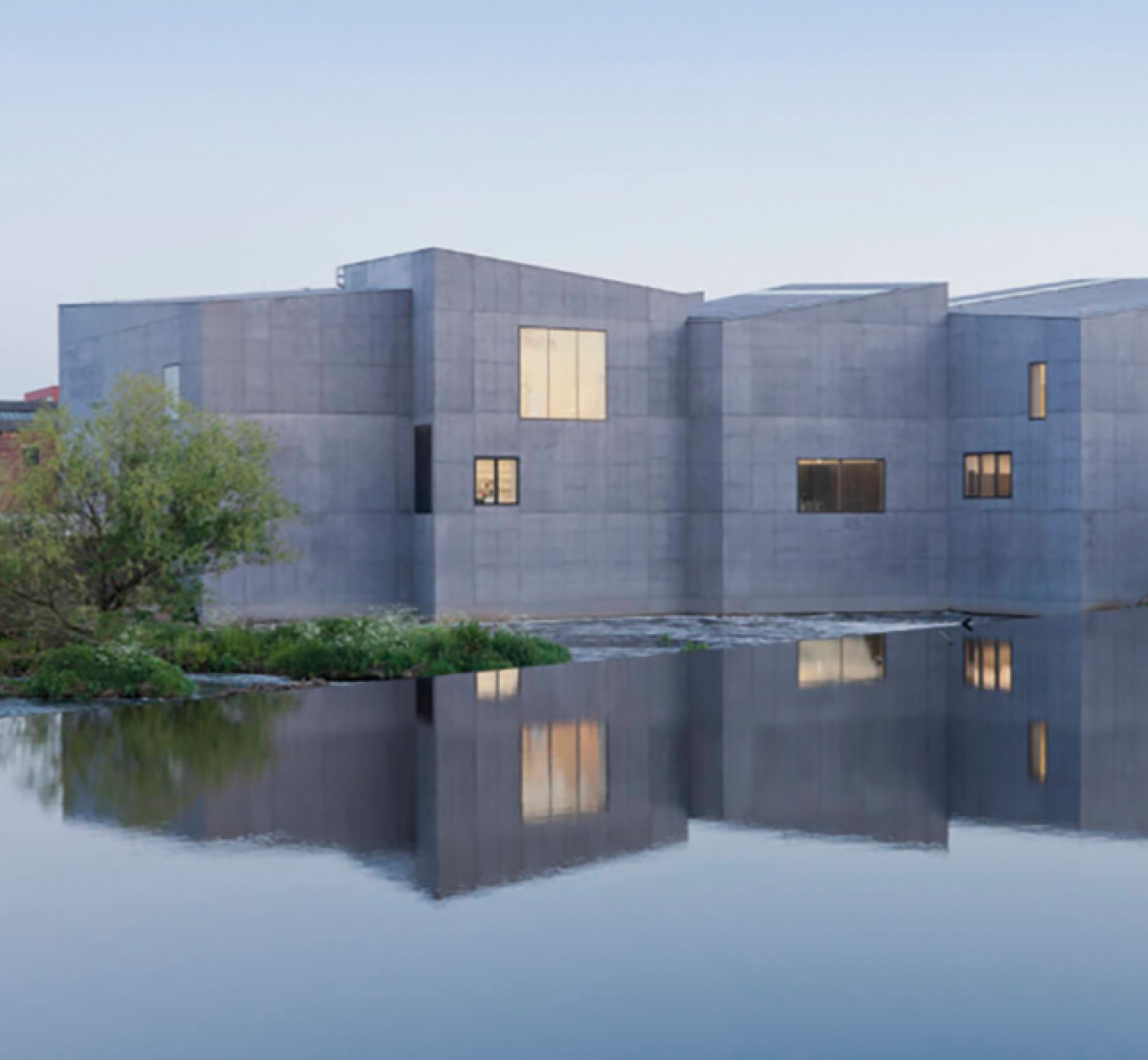

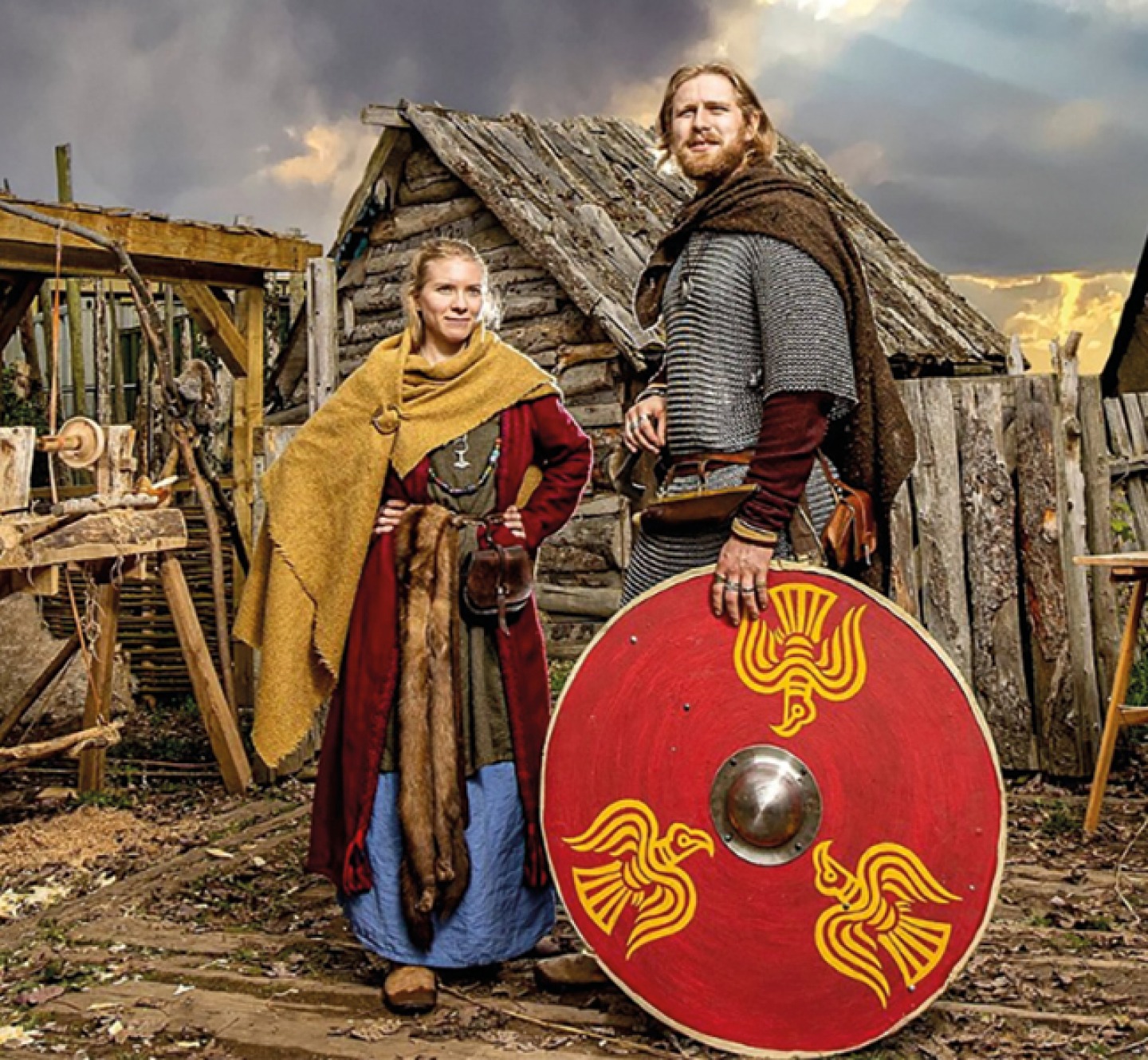
Hepworth Wakefield
On the banks of the River Calder, in the heart of Wakefield’s historic waterfront, this rather starkly designed award-winning art gallery is home to 44 sculptures by Barbara Hepworth, one of the most important artists of the 20th century who was born and brought up in Wakefield, plus a range of continually changing and evolving exhibitions by international and contemporary artists including the current groundbreaking Sheila Hicks: Off Grid exhibition which runs until 25th September.
Hepworth Wakefield is also where you’ll find Wakefield’s art collection – an impressive compendium of modern British art, including works by Ben Nicholson, Patrick Heron, L.S. Lowry, Barbara Hepworth and Henry Moore, as well as work by significant contemporary artists such as Frank Auerbach, Maggi Hambling, Anthea Hamilton, Martin Parr and Eva Rothschild.
Outdoors, the Hepworth Wakefield Garden was designed by Tom Stuart-Smith and amongst the distinctive planting are sculptures by Sir Michael Craig-Martin, Barbara Hepworth and Kim Lim. Free to enter, the garden also plays host to a programme of special events throughout the year.
Gallery Walk, Wakefield WF1 5AW 01924 247360 hepworthwakefield.org
Read More: 11 Facts You Might Not Know about Richmond
Eden Camp
One of the most comprehensive and immersive World War II museums, award-winning Eden Camp is not really like a museum at all. Built on the site of a real POW camp with 33 huts full of gritty history, the site shines a light on different areas of wartime Britain on the home front and the front line.
From immersive tours, plus a ‘Dig for Victory’ garden and a military garage, visitors can explore the sights and sounds of the war in incredible detail, from the rise of Hitler and the Nazi Party to the Blitz, women at war, the Home Front and post-WWII conflicts including a exclusive Falklands display in the Heritage Hall.
It’s thought provoking, moving and heartwarming all at the same time. If you find you need a sit down and a nice strong cuppa after some of the exhibits, head to WinStan’s Bunker Café (named after Stan Johnson, who opened the camp in 1987) where, luckily, rationing is a distant memory. Keep an eye out for the many special events and celebrations held here to mark landmarks in history.
Malton YO17 6RT 01653 697777 edencamp.co.uk
Jorvik
With state-of-the-art galleries, a collection of more than 1,000 artefacts, innovative touch-screen displays, and a fantastic moving capsule ride with 22 new animatronics, Jorvik brings York’s Viking past to life in all its murderous, ingenious and, occasionally, odorous glory.
You can find out how a five-year archaeological dig on the very spot where the attraction now stands led to the discovery of the city’s incredible hidden history, and jump in a time machine to visit a 10th century village and wander the carefully reconstructed Viking-age streets.
Everything you can see here is based on actual archaeological evidence found during the Coppergate excavation, with an emphasis on accurately recreating every detail, from the flora and fauna growing in the ground to the breeds of animals you would have found, and even the splashes of natural dyes found in one of the backyards.
19 Coppergate, York YO1 9WT 01904 615505 jorvikvikingcentre.co.uk
Read More: Yorkshire's Bucket List Foodies

York Minster
This moving, and frankly mind-blowingly beautiful edifice in the centre of York is a must visit. One of the world’s most magnificent cathedrals, the building of the Gothic structure you see today began in 1220 and it remains a thriving place of worship and prayer.
Every aspect of this ancient building, from the delicate handcrafted stone and medieval glass to the clever, almost invisible gallery which runs around the inner walls, is breathtaking.
The current restoration project includes panels of medieval glass from the windows which you can now inspect close-up in all their unbelievable detail.
Walk beneath the Great East Window, the largest example of medieval stained glass in the world, and admire the cavernous limestone nave and the intricately-carved choir stalls.
Weekly tours allow you access to the Chapter House roof – York Minster’s Central Tower is the highest point in York and offers unbeatable, panoramic views of the city.
See medieval stonework and gothic grotesques as you climb the 275 steps to the top, or join a Hidden Minster tour and discover hidden spaces and places normally closed to the public and hear how parts of the Minster were built.
The Minster’s cat, Gerald, who regularly patrolled the cathedral has recently been immortalised with a statue In York, and a new statue of Queen Elizabeth II will fill an empty niche on the Minster’s West Front, which is soon to be unveiled to celebrate the Platinum Jubilee.
Deangate, York YO1 7HH yorkminster.org
Read More: Yorkshire's Perfect Picnic Spots
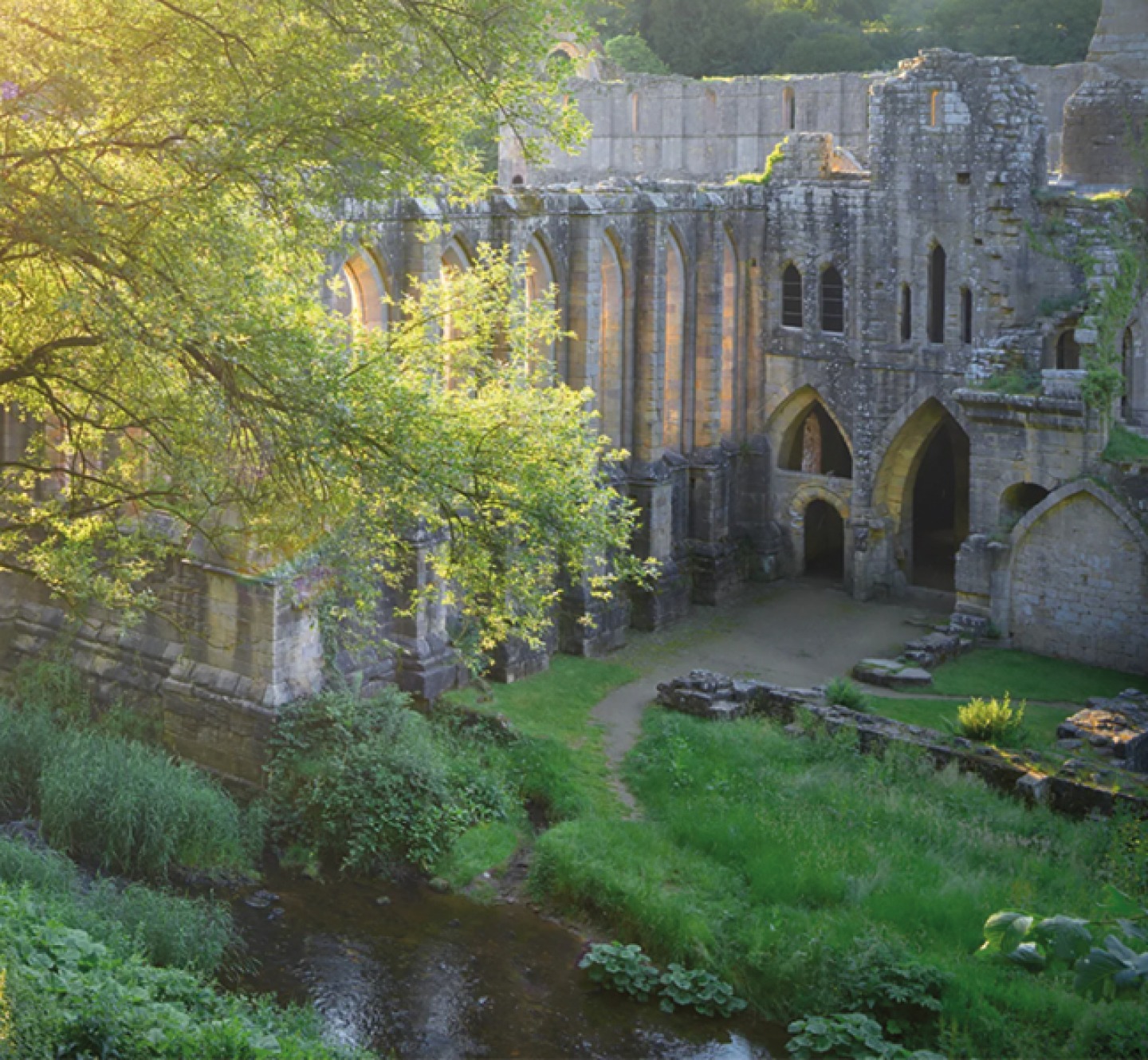

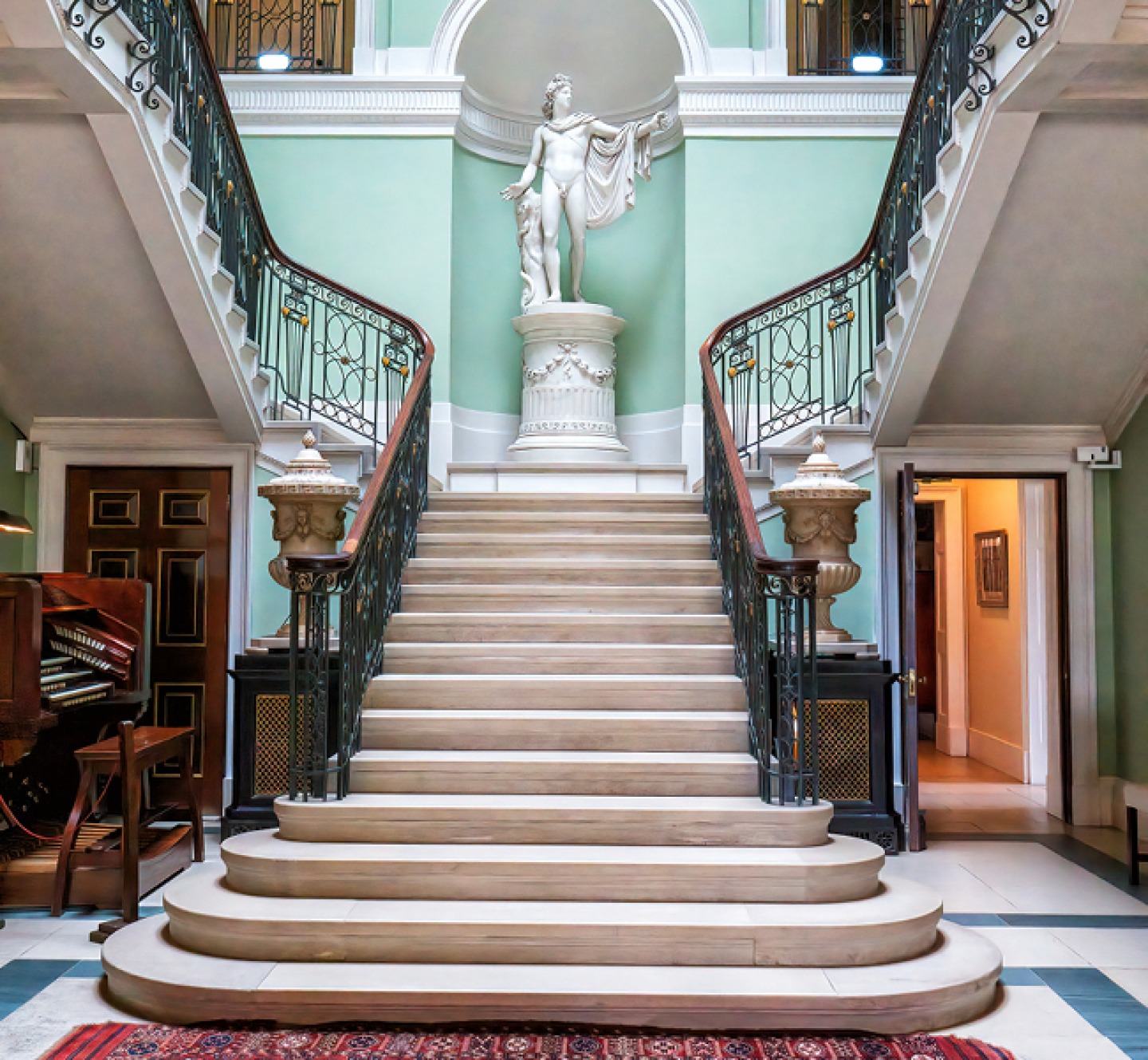
Fountains Abbey and Studley Royal
Founded in 1132 by 13 Benedictine monks, and now a World Heritage Site, the beautifully preserved Fountains Abbey, disbanded by King Henry VIII during the dissolution of the monasteries, remains one of the largest and best preserved Cistercian monasteries in England.
In the 18th century the surrounding woods and valleys were turned into the Georgian water gardens of Studley Royal by the socially ambitious John Aislabie, who set about creating a European-style elegant water garden of mirror-like ponds, statues and follies incorporating the romantic abbey ruins in his design.
The gardens are flanked by a deer park that’s now home to more than 500 animals. The estate, which you can explore under your own steam or on one of the free daily tours, is also home to Fountains Mill, built by the monks in the 12th century. Spend the day here wandering the vast spaces, admiring the water gardens, and discovering more about the rigours of life in the abbey.
Ripon HG4 3DY 01765 608888 nationaltrust.org.uk
Read More: Yorkshire's Leading Farm Shops
Beningbrough Hall
Sadly, the 18th century hall is currently closed for renovation, but luckily for anyone interested in horticulture, the ever-evolving gardens here are not. Shaped by its numerous occupants, the hall and gardens have an intriguing story to tell, beginning with the wealthy teenager who built the mansion and its occupation by the RAF in World War II, up to its reinvention as a country house gallery in partnership with the National Portrait Gallery.
In the eight acres of formal gardens, the story continues with numerous sections showing Italian, Victorian and even horse racing influences as traditional herbaceous borders contrast with sweeping lawns, formal gardens and beds, wildlife areas, and a restored working walled garden with over 90 varieties of fruit trees and shrubs and a southern border crammed with vibrant colour.
Beningbrough, York YO30 1DD 01904 472027 nationaltrust.org.uk
Sledmere House
A Grade-I listed Georgian country house, Sledmere has been captivating visitors for more than 200 years. Designed by Samuel Wyatt and the 2nd baronet, Sir Christopher Sykes, and nurtured by successive generations, it was almost completely destroyed by fire in 1911.
Thankfully, most of the contents were rescued, so modern visitors can enjoy the splendour of Joseph Rose’s plasterwork and fine examples of furniture by Chippendale, Hepplewhite and Sheraton.
Stroll in the 200 acres of parkland designed by Capability Brown, visit the stables, which have been in constant use since 1780, and pop in to the Triton Gallery, one of East Yorkshire’s most prominent exhibition spaces for contemporary art.
The gardens here include the walled garden which has been reimagined with a contemporary twist with a unique planting scheme that keeps keen gardeners coming back to see what’s new.
The formal fruit garden has apple and pear trees all trained into unusual shapes, and there is also an Angel Garden, and Reflection Garden ‘designed to invoke a soulful sense of loss’ – the tight colour palette, dark water and muted paths are in contrast to the rest of the vibrant landscape.
Sledmere, Driffield YO25 3XG 01377 236637 sledmerehouse.com
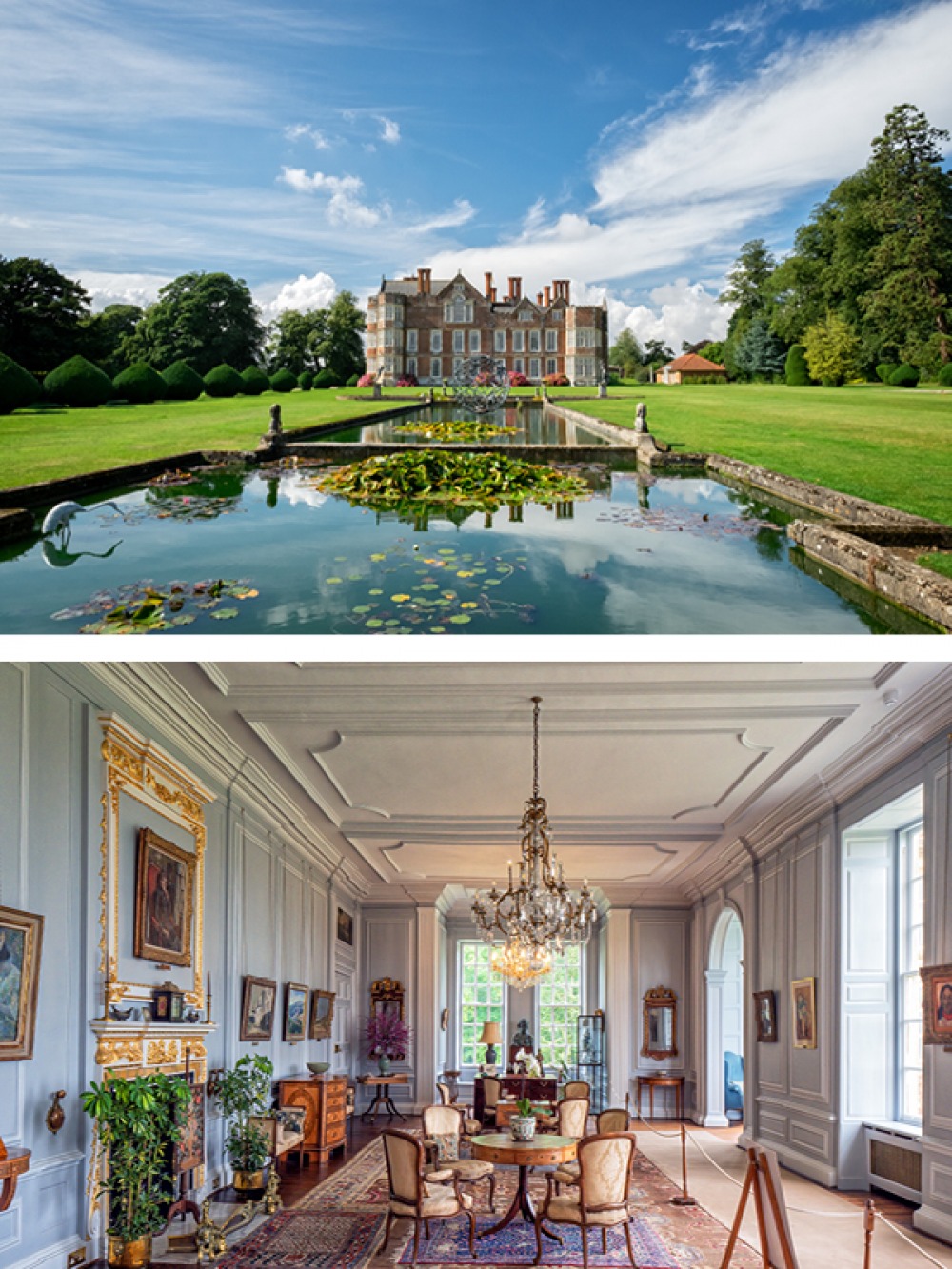
Burton Agnes Hall
This Elizabethan stately home has been in the Cunliffe-Lister family for more than 400 years and is still very much a family home. In that time, they’ve filled its rooms with 15 generations of art, treasures and charm.
The Norman Manor House was built by Roger de Stuteville in 1173 and the beautiful proportions of the hall and its adherence to the principles of Tudor Renaissance architecture owe much to architect Robert Smythson, Master Mason to Queen Elizabeth I and builder of other glorious country houses such as Longleat and Hardwick.
It is the only Smythson house where the original plan still exists. History talks and woodland walks mean you can step back in time to discover more about this beautifully-maintained home and its award-winning gardens.
The walled garden, created in 1990 by Susan Cunliffe-Lister after the family took over the Hall in 1989, was built to contain the original Elizabethan gardens over four hundred years ago.
At the beginning of the 20th century it was a typical Victorian walled garden containing vegetables, fruit and flowers all grown for the house. However, by the 1970s, this had become uneconomical and the garden was grassed over.
Keen to bring the walled garden back to its former glory, rather than recreating a replica of the original Elizabethan garden, Susan’s concept for the new design was to combine the two Elizabethan ages.
Built up over the past 20 years, the walled garden is now a unique flourishing wonderland containing more than 3,000 different plants and is a must-visit for all aspiring gardeners.
Burton Agnes, Driffeld YO25 4NB 01262 490324 burtonagnes.com
Read More: Events you Won't Want to Miss this Summer in the North East and Yorkshire, From Deer Shed Festival to Kynren
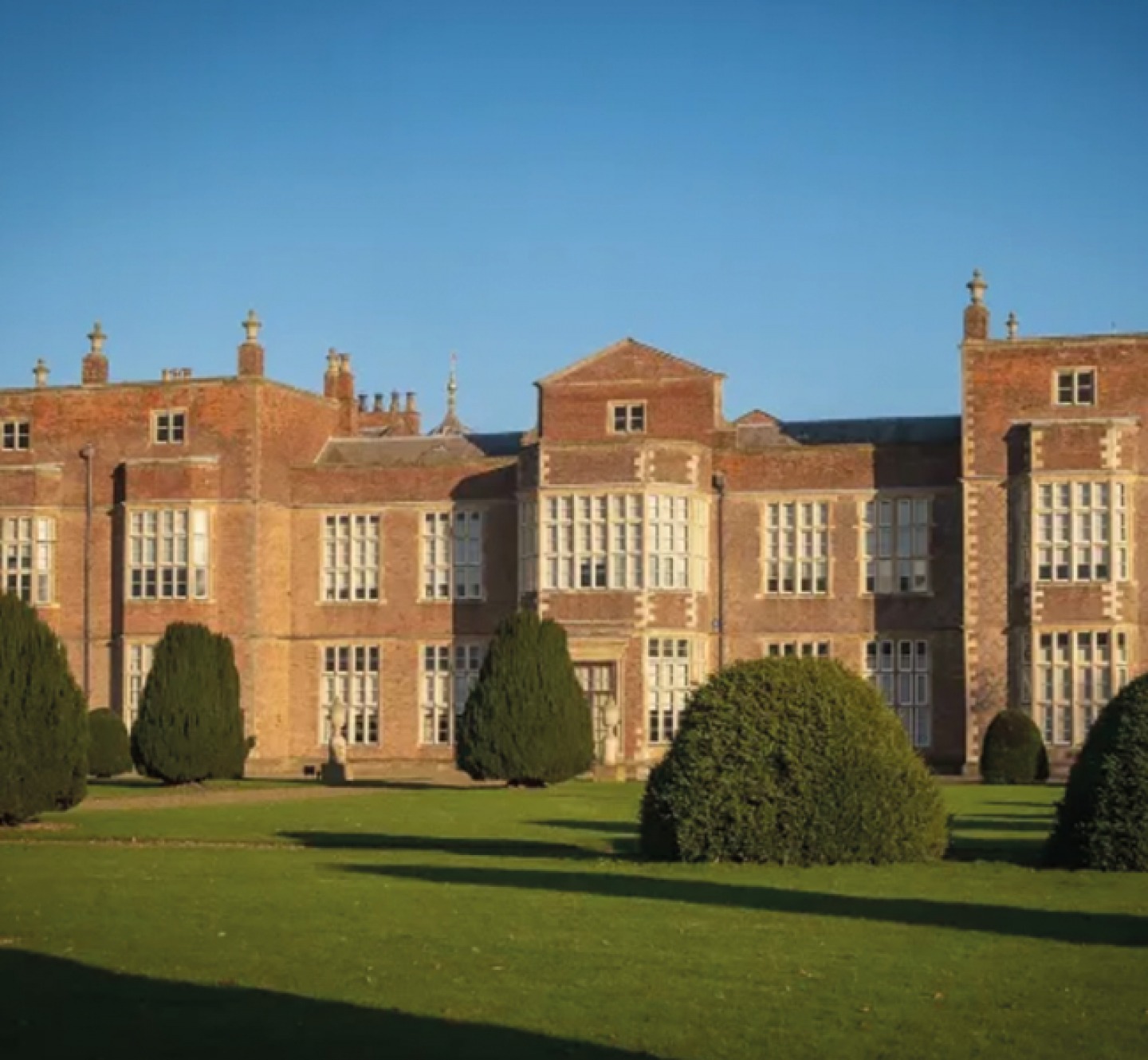

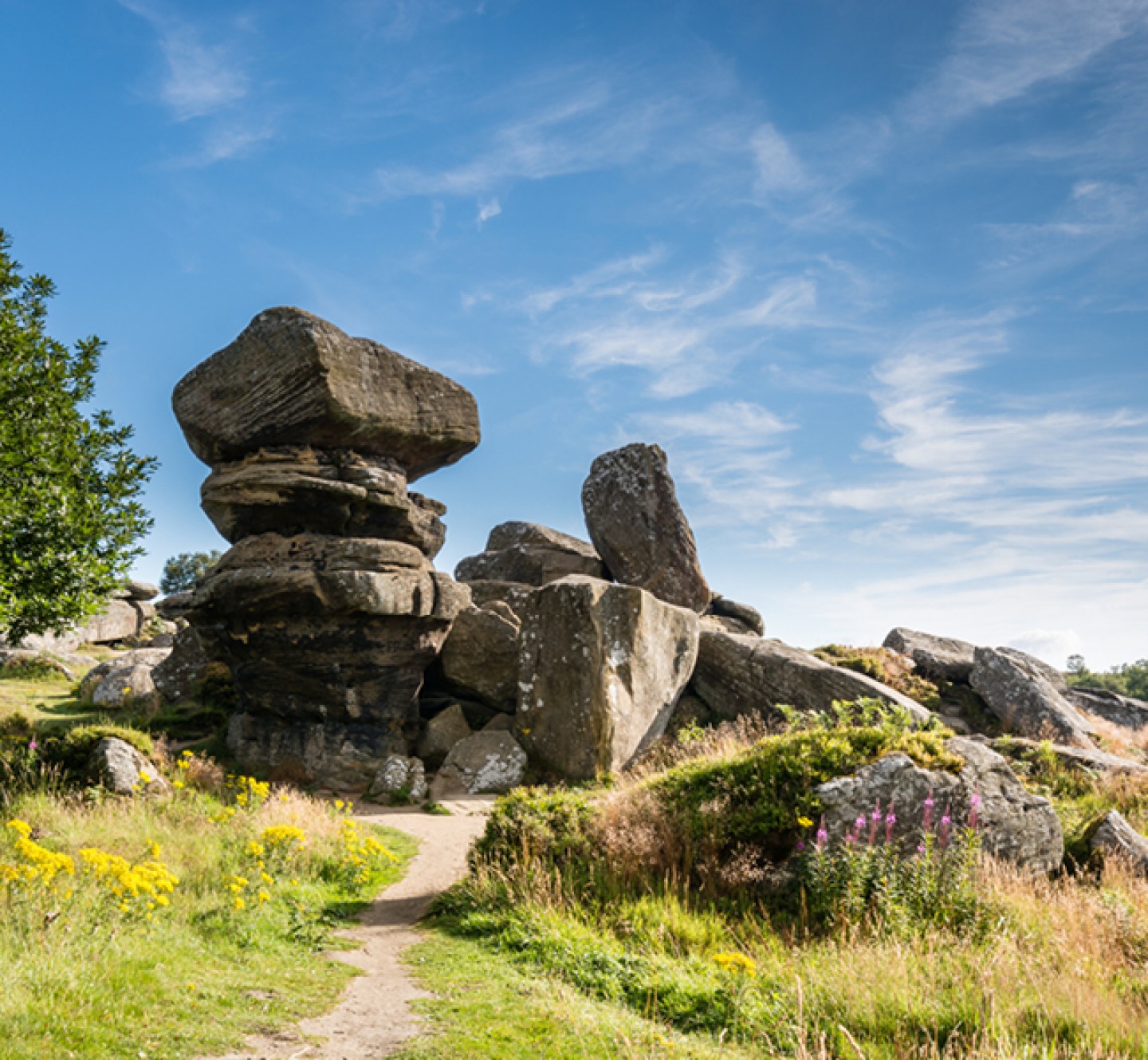
Burton Constable Hall and Grounds
A grand old Grade-I listed, Elizabethan country house with a long and somewhat complicated history. There are lots of rooms to explore, as Burton Constable offers a glimpse into the lives of those who lived on the estate as long ago as the 13th century. The lower part of the north tower, known as Stephen’s Tower, is the oldest part of the house still surviving. In the late 15th century a new brick manor house was built here but much of this was demolished in the 1560s when Sir John built the new Elizabethan mansion (which luckily incorporated remains of the earlier manor house). Sir John’s transformation included the addition of a new great hall, parlour and great chamber, together with a south wing that had another tower to balance with the surviving north tower. This south wing also contained a kitchen, additional lodgings and a chapel. Visit the Great Hall, the French Bedroom and the Great Drawing Room, but the best way to really discover Burton Constable’s fascinating history and the stories behind the unique collections here is to book a guided house tour. Outside, discover the stableblock, with displays and exhibitions telling the story of stable life in past times, and more than 300 acres of historic parkland designed by the renowned Capability Brown, which is dotted with walks and wildlife trails.
Skirlaugh HU11 4LN 01964 562400 burtonconstable.com
Hole of Horcum
This is not just any old hole in the ground. This is a massive hole in the ground and one of the most spectacular features in the National Park that attracts hikers, strollers and people who simply want to park up and enjoy a cup of tea, or something stronger, while staring at a 120-metre deep, 1.2km-wide hole. Local legend has it that this ‘devil’s punchbowl’ natural amphitheatre was formed when Wade the Giant scooped up a handful of earth to throw at his wife during an argument. Sadly, it was actually created by water welling up from the hillside and weathering away the rocks over thousands of years. Still worth a visit though. There’s a great five-mile scenic walk which takes in the dramatic panorama from Saltergate over the Hole, and takes walkers past important archaeological remains. A more challenging diversion takes you to the stunning viewpoint of Skelton Tower, before dropping down into the rocky ravine of Dundale Griff where you follow the valley floor until you can climb back out at Saltergate.
Levisham Moor YO18 7NR 01439 772700 northyorkmoors.org.uk
Brimham Rocks
This collection of weird and wonderful rock formations, on a site of special biological and scientific interest covering more than 180 hectares, makes for a great day out, especially for lovers of the great outdoors. The rocks, sculpted by the movement of entire continents and hundreds of thousands of years of ice, rain and wind, now resemble creatures so look out for some familiar shapes, with the Dancing Bear, the Eagle and the Gorilla among them. The more nimble can crawl through the Smartie Tube, and balance on the Rocking Stones. Some of the most iconic rock formations can be seen just a 10-minute walk from the car park, but we suggest you take your time and roam this amazing site, taking in the breathing views of the surrounding countryside. Brimham Rocks is also home to three rare species of heather, and with 70 bird boxes on the site, keep an eye out for spotted flycatchers, treecreepers and owls or join one of the special guided walks to learn more about the site and its wildlife. Over the summer there are also plenty of activities which range from forest bathing to organised adventure days, and try and catch one of the outdoor performances from Badapple Theatre using the rocks as a special backdrop.
Summerbridge, Harrogate HG3 4DW nationaltrust.org
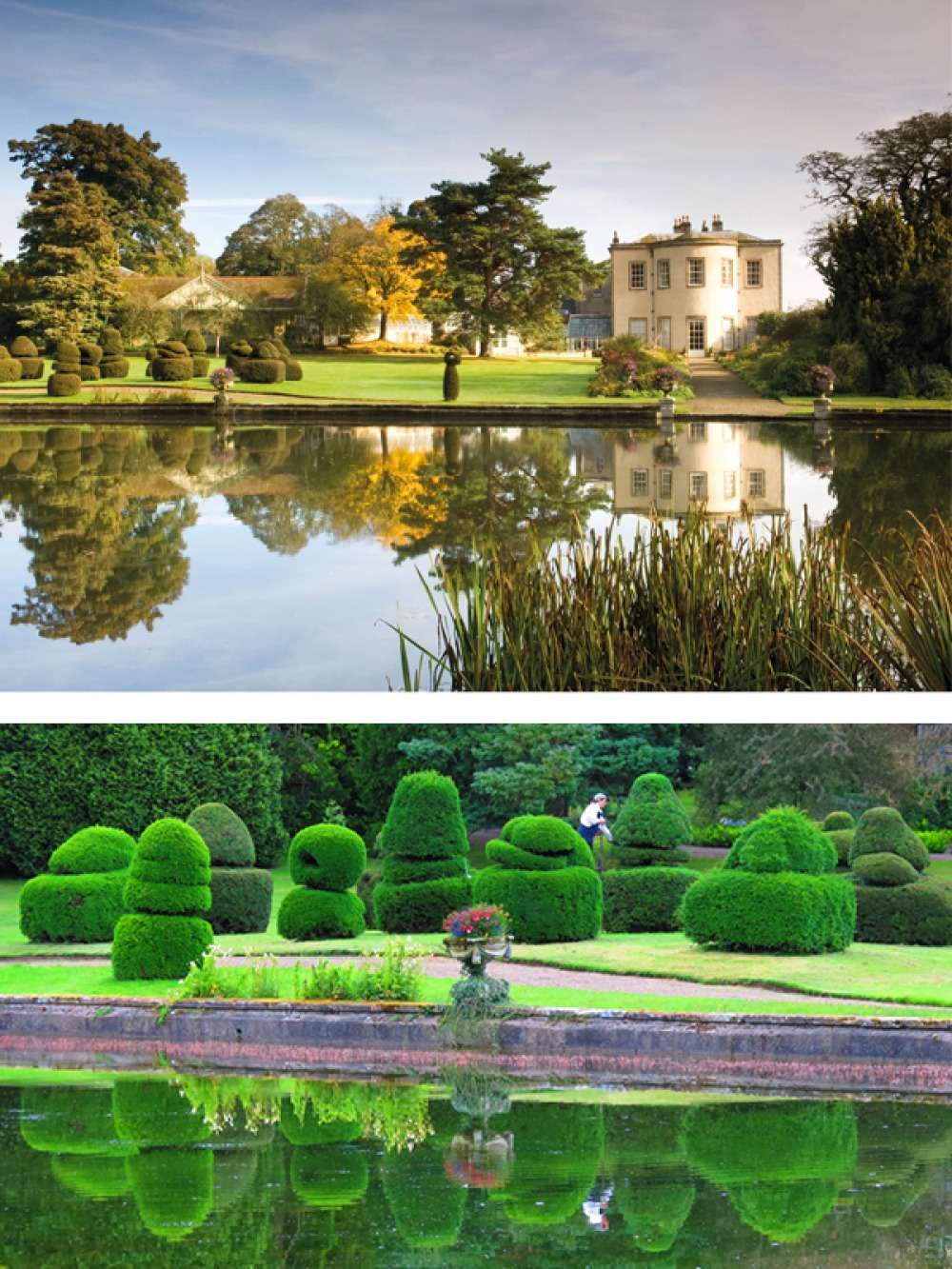
Thorp Perrow Arboretum
Thorp Perrow is where to find some of the largest and rarest trees and shrubs in England, let alone Yorkshire, including five National Plant Collections. Summer in the Victorian Arboretum and surrounding woodland gardens is a riot of colour and it’s where an abundance of wildlife can be found. As well as the gardens founded by Sir Leonard Ropner, Thorp Perrow also includes Milbank Pinetum planted by Lady Augusta Milbank in the 19th century and the 16th century Spring Wood. The Mound attracts a dazzling number of bees and butterflies, while the stunning banks of mop-headed hydrangeas provide a colourful display. There are plenty of workshops and talks held throughout the year, including an introduction to beekeeping, blossom tours and even foraging for wild food and medicines.
Bedale DL8 2PS 01677 425323 thorpperrow.com
Read More: All The Reasons to Discover Hambleton

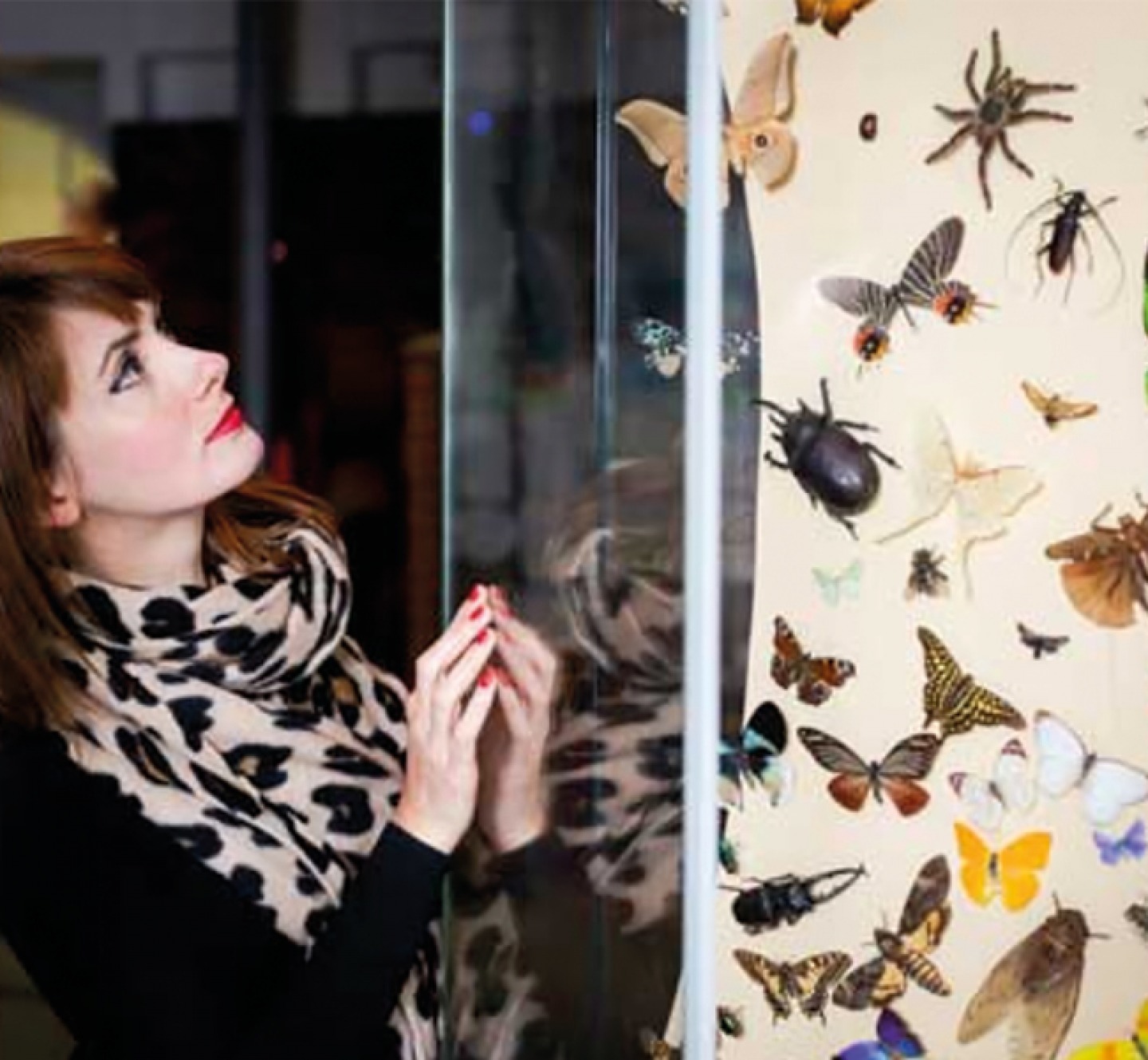

Potfest
The UK’s original potters’ market, bringing creative talent from across the country together, Potfest now has seven venues but its Penrith location, Potfest in the Pens, was the very first to establish itself way back in 1994.
Held under cover (this is Cumbria!) in June, it’s your chance to meet the potters and get up close with their extraordinary work at Skirsgill Auction Mart.
The exciting mix of well-established artists and up-and-coming new talent exhibit their pieces in a friendly and approachable marketplace where you can discuss their work in detail in a down-to-earth setting. From figurines and intricate sculptures, to pots, plaques, stunning bowls and equally stunning vases, you’ll find an incredible selection of work not available to buy anywhere else.
You can also try your hand at creating your own pot at one of the free-throwing lessons and hand-building workshops which take place over the three days. With plenty of free parking and food and drink available on site, it’s easy to make a day (or weekend) of it here.
They do it all again at Potfest in the Park, set against the magnificent backdrop of Hutton-in-the-Forest on the edge of the Lake District National Park. Held under canvas on the parkland, the potters’ special competition pieces are displayed on the lawns in front of the house.
Potfest in the Park (29th–31st July) pottfest.co.uk
Leeds City Museum
There are four floors and six unique galleries to explore here, and collections include finds from architectural digs, and the Collectors Cabinet which tells the story of collecting in Leeds from 1700, but make sure you set enough time aside to squeeze in a quick visit to the infamous Leeds Tiger.
Curators once wanted to throw out this oddly-shaped, beguilingly cross-eyed piece of 19th century taxidermy, but the people of Leeds campaigned for it to stay.
It really is quite something (although no one is entirely sure what). The newly refurbished Life on Earth gallery, home to a remarkable 800,000 animals, vegetables and minerals, will re-open on 27th May and is definitely worth checking out too.
Millennium Square, Leeds LS2 8BH 0113 378 5001 leeds.gov.uk
Malham Cove & Gordale Scar
This instantly recognisable limestone amphitheatre is a cliff formation made of limestone with a vertical sheer face, popular with abseilers and climbers, at more than 260 feet high.
Famous long before its limestone pavement made an appearance in Harry Potter and the Deathly Hallows, it has featured in many TV programmes over time, and has attracted visitors for centuries.
Formed by an ice-age river, you can climb the steps up the steep side of the cove, which are part of the Pennine Way, to admire the breathtaking view from the top of the cove out over the Yorkshire Dales National Park, stretching far below.
A more gentle climb to the same spot is via Janet’s Foss, a tranquil, wooded spot with a stunning waterfall where Gordale Beck drops over a limestone outcrop into a deep pool below (traditionally used for sheep dipping), looking out for the lucky penny tree stumps which are home to hundreds of coins, old and new, on the way (Janet was the Queen of the fairies and lived in a cave behind the falls).
From there, carry on to the steeply-sided Gordale Scar, before heading over open fields to the top of the cove. Don’t miss a detour to Malham Tarn too.
A natural hollow in the boulder clay, this glacial lake is one of only eight upland, alkaline lakes in Europe, and the highest in the UK. It’s a dramatic, open area of limestone pavement and grassland, high peaks and rocky outcrops, and is internationally important for the variety of flowers and other wildlife you can find here.
Malham, North Yorkshire
Read More: Walk This Way: North York Moors
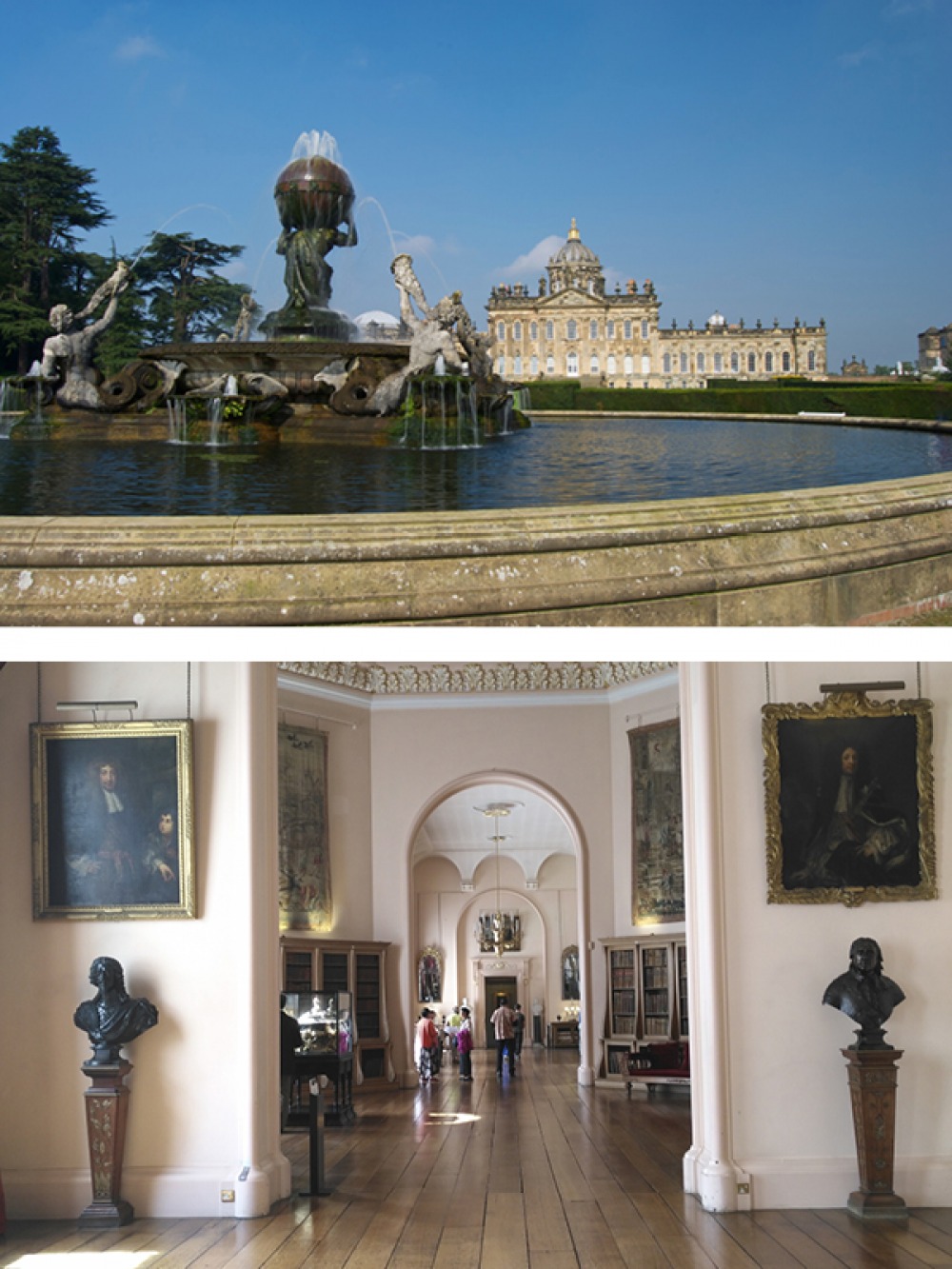
Castle Howard
Considered to be one of the finest stately homes in Britain, Castle Howard has collections that tell the estate’s story through times of war, tragedy and triumph dating back hundreds of years.
Home to works of art of international significance, the best way to really understand the incredible history of Castle Howard is to book onto a guided tour.
For those who prefer to wander, don’t miss the priceless picture collection gathered by the 3rd, 4th and 5th Earls as they travelled widely in Europe.
The collection includes paintings by Italian masters Bassano, Bedoli, Bellini, Carracci and Titian and English artists including Sir Joshua Reynolds, Johann Zoffany, and Thomas Gainsborough.
There’s a constantly changing programme of exhibitions and displays which often reveal surprising aspects of Castle Howard’s history – sometimes focusing on social history and impacts on the House and family, sometimes highlighting particular elements of the House or collections.
The estate stretches to 1,000 acres – making it the perfect place to spend a day (or more) exploring the temples, fountains, lakes, walled garden and farm shop. There are also curated walks and talks for you to join if you want to hear more about the history and on-going restoration and development projects on the estate.
Castle Howard, York YO60 7DA 01653 648333 castlehoward.co.uk

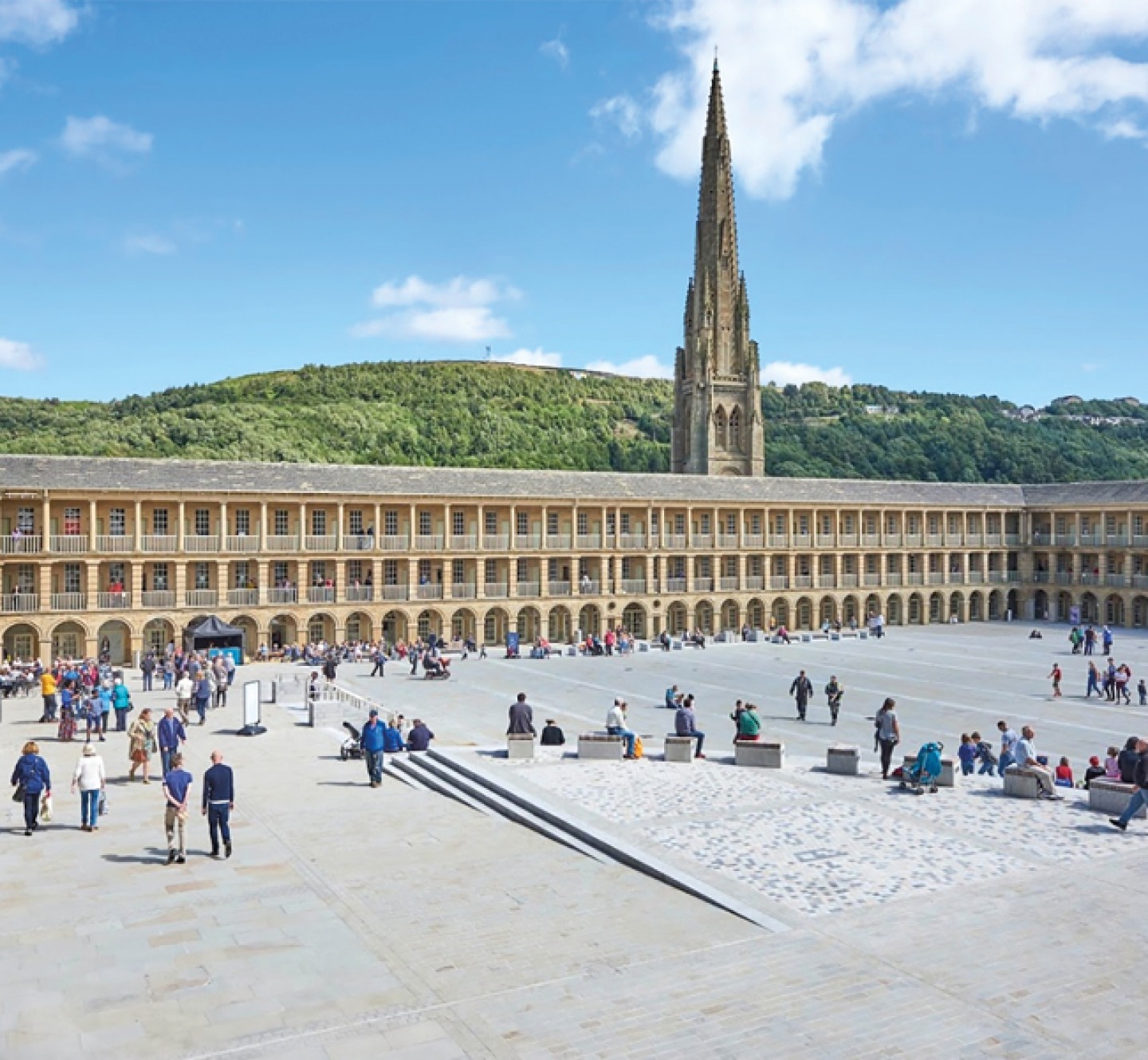
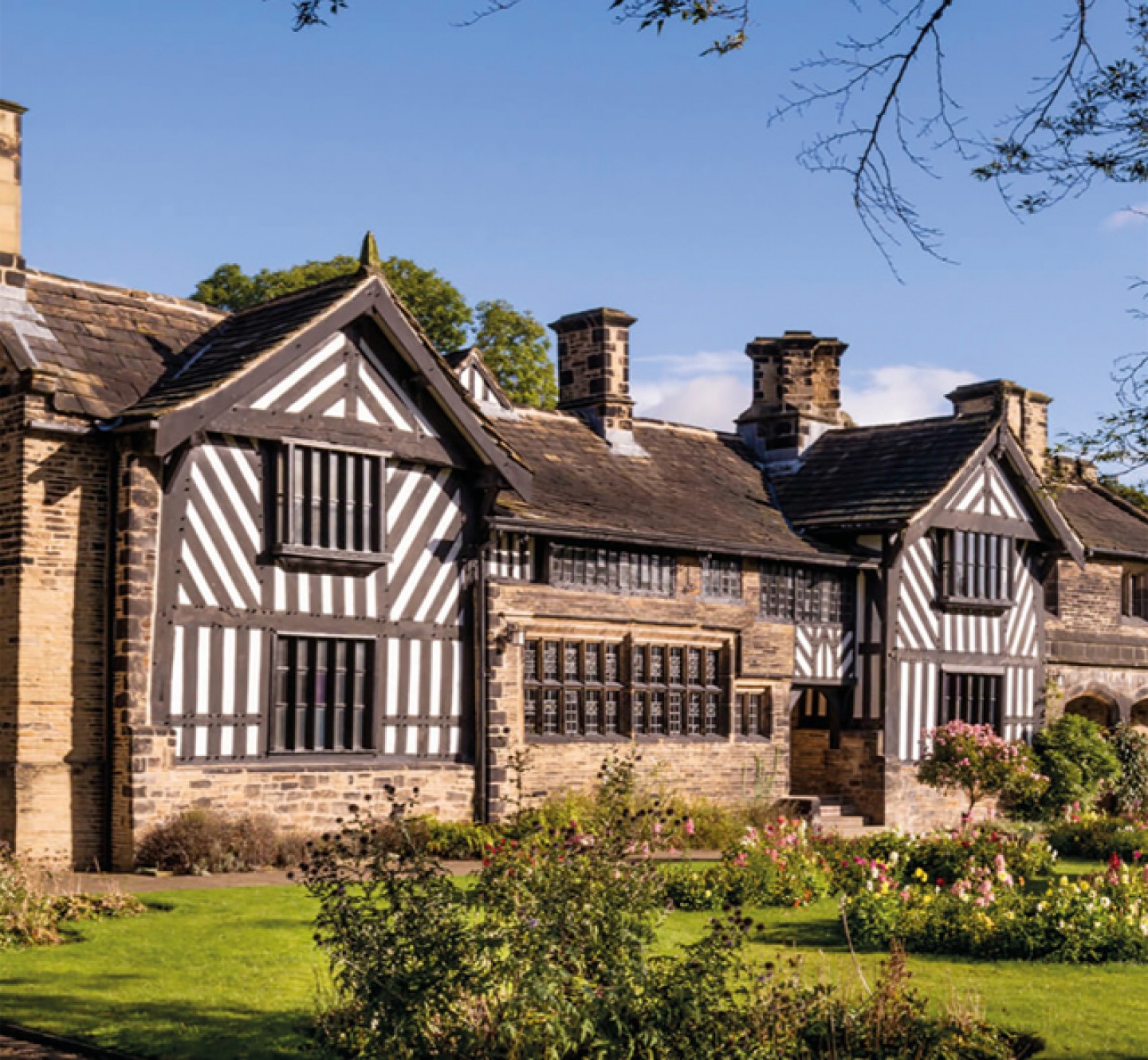
Raby Castle
Built by John Nevill, 3rd Baron Nevill de Raby, this medieval castle sits in 200 acres of deer park and gardens. The castle itself has a fascinating history, originally built as a palace fortress, it was home to Cecily Nevill, mother of two kings of England, and it played a prominent part in the Rising of the North and was a Parliamentary stronghold during the Civil War.
Inside is a mix of Medieval, Regency and Victorian interiors where you’ll find important art and furniture dating from the 17th through to the 20th century.
Don’t miss the spectacular 1840s Octagon Drawing Room, the historic Baron’s Hall, and the kitchen, built in 1360 and still presented very much as it would have been in medieval times.
The castle’s coach house and stables were designed by renowned architect John Carr in the late 1700s and are well worth a visit to find the unique collection of coaches and travelling chariots, and the livery worn by the coachmen of Raby.
The castle grounds include five acres of traditional 18th century walled garden with a fig house, rose garden and plenty of ornamental features worth finding.
Staindrop, County Durham DL2 3AH raby.co.uk
The Piece Hall
Reminiscent of a Roman courtyard or Venetian piazza, the Grade-I Georgian masterpiece that is The Piece Hall in Halifax is the last surviving cloth hall in the world.
Recently renovated, this architectural and cultural phenomenon is the sole survivor of the great 18th century Northern cloth halls, a class of building which embodied the vital and dominant importance of the trade in hand-woven textiles to the pre-industrial economy of the West Riding of Yorkshire, from the Middle Ages through to the early 19th century.
Dating from 1779, when it was built for the trading of ‘pieces’ of cloth (a 30-yard length of woven woollen fabric produced on a handloom), The Piece Hall was the most ambitious and prestigious of its type. It was also a highly visible statement of the great wealth, pride and ambition of the cloth manufacturers.
You can discover its captivating past on your very own private tour, or sign up for one of the various workshops and live events which pop up throughout the year, while the independent boutiques, cafes and bars which line the courtyard are all worth a visit.
Blackledge, Halifax HX1 1RE thepiecehall.co.uk
Shibden Hall
Once the home of landowner, diarist and ‘the first modern lesbian’ Anne Lister (also known as Gentleman Jack), and now made famous by the BBCs drama production of the same name, the Grade II-listed Shibden Hall is a treasure trove of interest.
Although extensively remodelled from its original design, the distinctive Tudor-timbered frontage is instantly recognisable, and the interior is jam-packed with early 19th-century furnishings which make this a fascinating insight into life at that time.
The adjacent 17th century aisled barn and workshops house a carriage collection and displays of different traditional crafts including a blacksmiths, coopers, wheelwrights and saddlers. Outside, the extensive grounds include a boating lake, woodland walking trails and even a miniature railway.
Lister’s Road, Halifax HX3 6XG 01422 352246 museums.calderdale.gov.uk
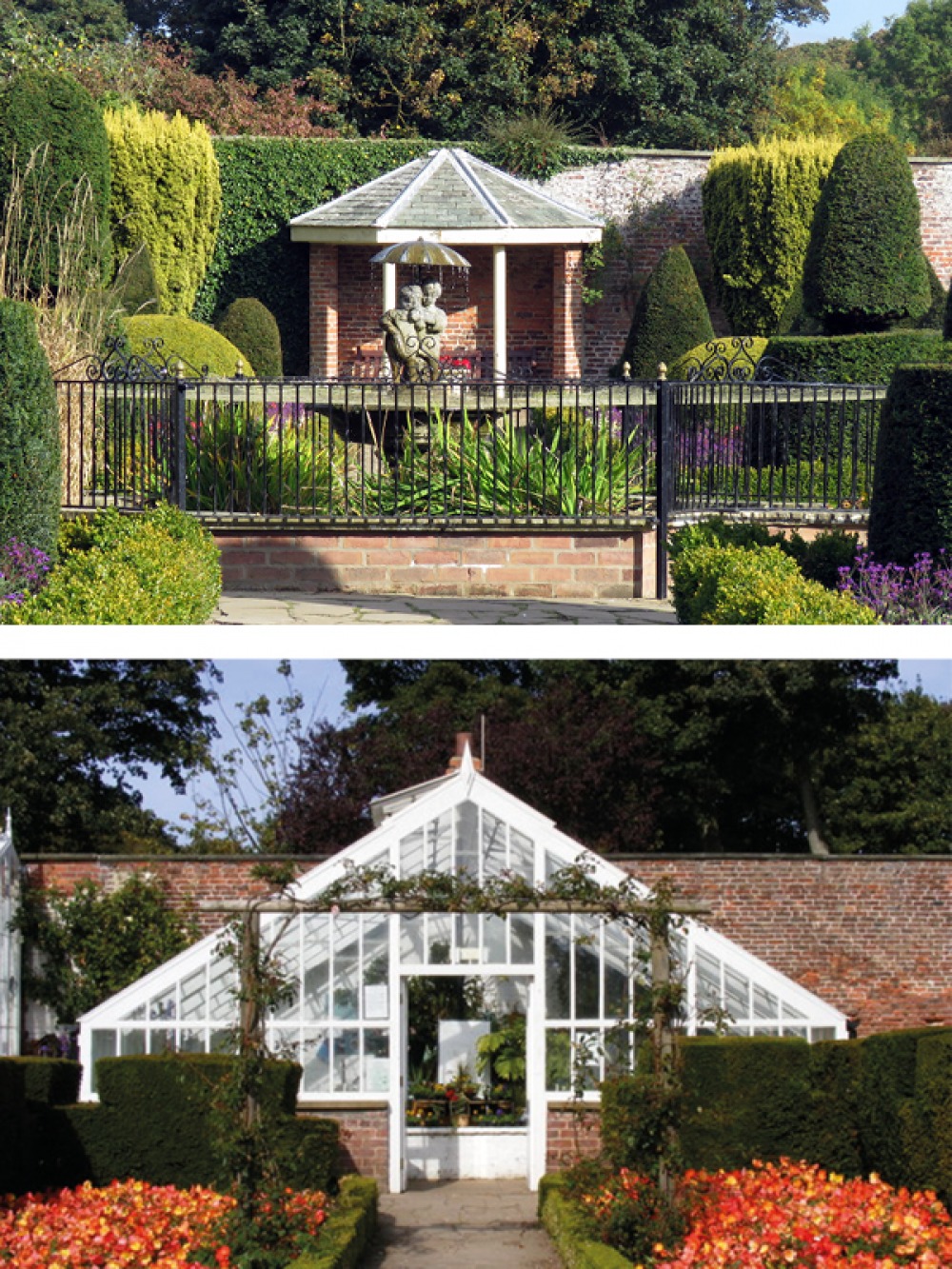
Sewerby Hall, Gardens & Zoo
Restored to its Edwardian glory, this Grade-I listed house is well worth exploring before you head out into the walled garden, pleasure garden, picnic areas and the zoo.
The Georgian core of the house was built from 1714–1720 by John Graeme, with later additions in 1808, the 1830s, 40s, and 90s; Sewerby is a tour through architectural history. A total restoration in 2014 saw the hall re-presented as an Edwardian Country house, circa 1910.
The rooms are furnished with impressive pieces from the Victoria and Albert Museum as well as other important collections. Don’t miss the Amy Johnson collection where you can see memorabilia of Hull-born aviatrix Amy, who was invited to open the Hall to the public in 1936.
Outside there are 50 acres of gardens and woodland and at the zoo you’ll encounter animals from various countries including Taiwanese sika deer, Cameroon sheep and a colony of Humboldt penguins.
Church Lane, Sewerby, Bridlington YO15 1ED sewerbyhall.co.uk


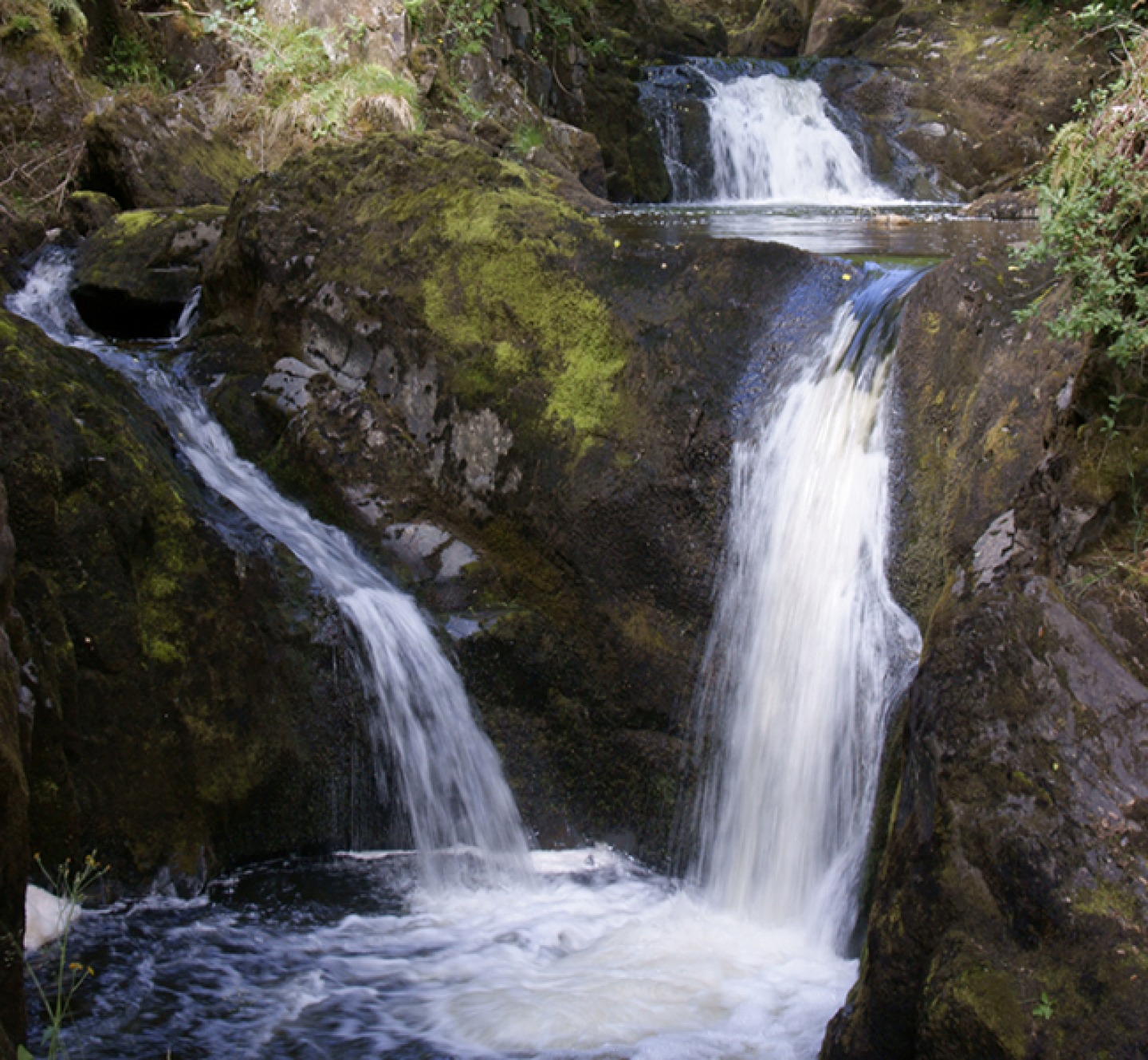
Black Sheep Brewery Tour
Definitely one for when the kids are still at school, a Black Sheep Brewery tour takes you on a journey from the start of Black Sheep’s story to the present day, and will give you a great insight into how this popular brew is made.
Located in pretty Masham, this family-run brewery brews all manner of Yorkshire bitters, ales and porters using water extracted from their very own on-site bore hole.
You’ll be guided through the brewhouse, and can watch the magic as it happens before finishing the tour at the bar where you can sample what you’ve seen. Places are limited so do book in advance if you are determined to see this popular brewery in action.
Masham HG4 4EN 01765 680101 blacksheepbrewery.com
The Thackray Medical Museum
Although the kids will probably love some of the gory details found at this unique museum, it’s also fascinating for adults who enjoy something of the macabre. There are nine interactive galleries in the beautiful Grade II-listed building which was once the Leeds Union Workhouse.
The exhibitions tell the story of life in Victorian Leeds. Witness the sounds and smells of the grimy, disease-ridden city and discover how operations were carried out (absolutely no anaesthetic allowed) in the 19th century operating theatre.
There’s a 70s-style sexual health clinic, and plenty of informative and inspiring exhibits to show how the world has responded to medical crises, highlighting the cutting-edge innovations that have helped to change healthcare.
Beckett Street, Leeds LS9 7LN 0113 2444343 thackaraymuseum.co.uk
Ingleton Waterfalls Trail
Ingleton has been well-known for its caves and magnificent mountain scenery since the 18th century, but after a series of articles appeared in the local press, public curiosity prompted the appointment of an Improvements Company to make the waterfalls accessible to the public.
Easier to negotiate without the fear of kids straying from the sometimes slippery path, the Ingleton Waterfalls Trail lets you soak up the scenery as two spectacular tumbling rivers, the Twiss and the Doe, guide you on an seven-kilometre circular walk past natural waterfalls, spouts and gorges as the water forces its way downstream.
As you climb beside the series of Pecca Falls, watch the scenery develop from heavily canopied woodland typical of the limestone scenery, to the wilder open-air brackens and heathers of the slate and sandy soil higher up.
There are five main waterfalls here where the river Twiss drops 30 metres over sandstone steps into plunge pools which are thought to be as deep as the falls themselves.
Head past Holly Bush Spout to Thornton Force, the most famous of the waterfalls on the trail where the river plunges 14 metres over a limestone cliff.
Quite rightly, thanks to the rich variety of geological features and phenomena, this is now a Site of Special Scientific Interest. (Be aware there is an entry fee and you will need to purchase a ticket to the trail).
Broadwood Entrance, Ingleton, Carnforth LA6 3ET 01542 41930 ingletonwaterfallstrail.co.uk
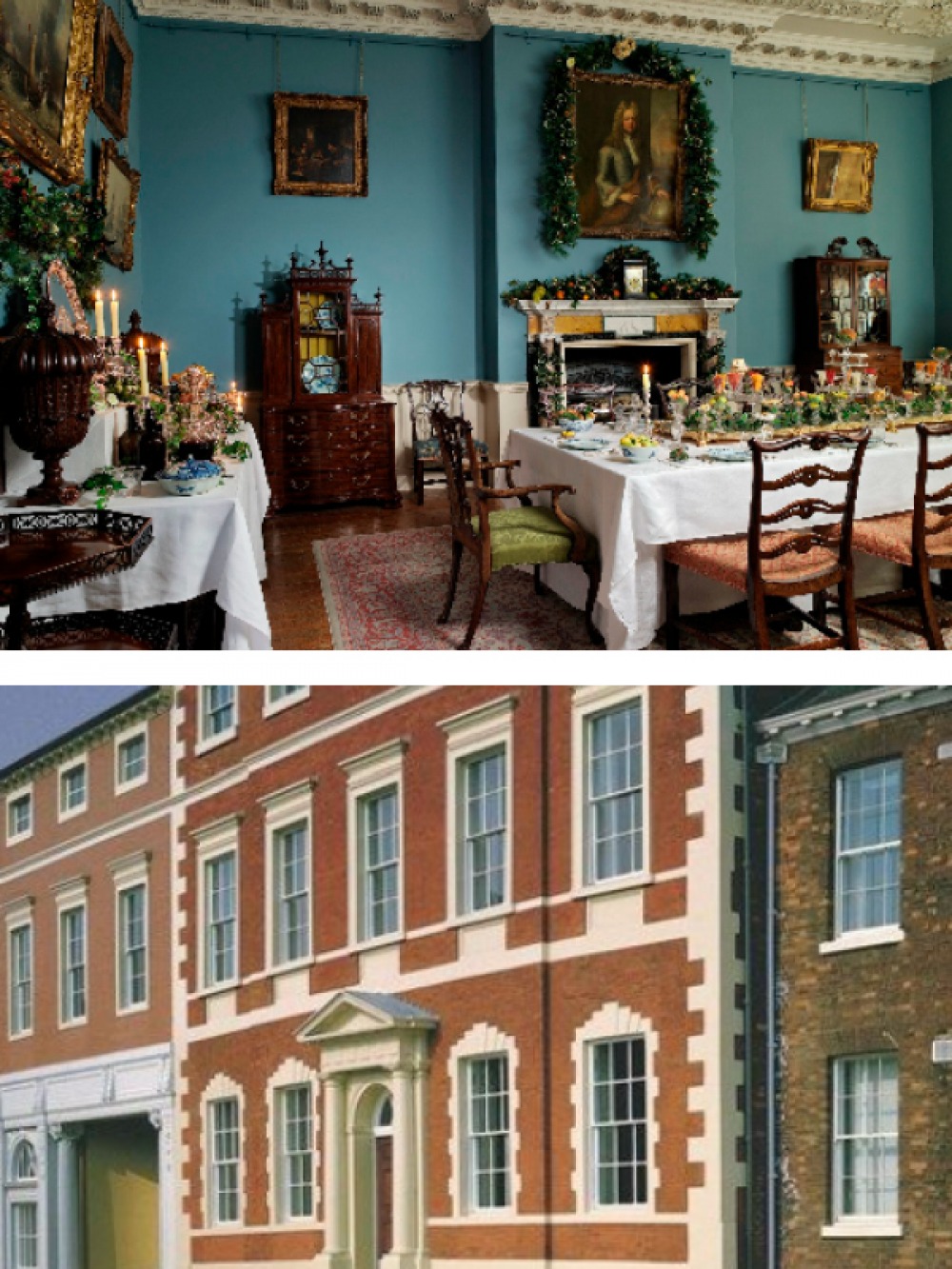
Fairfax House
One of England’s finest Georgian townhouses, Fairfax House will transport you back to the glory days of 18th century York. Originally the winter home of Viscount Fairfax and his daughter Anne, Fairfax House’s richly decorated interiors and magnificent stucco ceilings make it a masterpiece of Georgian design and architecture.
Set in the heart of York, Fairfax House reveals the domestic interiors, the tastes and fashions of the day for architecture, interior decoration, food and furnishings, as well as the customs and habits of York’s wealthiest gentry and aristocracy.
It was a place where the winter season could be enjoyed, and with it, all the entertainments and social engagements that this centre for ‘polite society’ had to offer.
A beautiful collection of furniture brings the house alive and evokes a life once lived in comfort and grandeur in the 1760s. The Viscount married twice, losing his first wife Elizabeth Constable (nee Clifford) within a year of their marriage in 1721.
His second marriage to Mary Fairfax, a not-so-distant cousin, produced nine children – seven of whom died in infancy, and by 1753 the Viscount had only one remaining daughter, Anne.
And it is Anne who plays a starring role in a new exhibition at Fairfax House. If Walls Could Talk: The Forgotten Story of Anne Fairfax (until 13th November) turns the much-maligned spinster into one of the richest heiresses in Yorkshire for her time.
The exhibition raises important questions about the treatment of women in history and is an exciting re-adjustment of the narrative of Fairfax House.
Clearly a women determined to succeed, this carefully-curated story highlights how Anne Fairfax has been mistreated, manipulated and misunderstood both in her lifetime and by history since.
Castlegate,York YO1 9RN 01904 655543 fairfaxhouse.co.uk







